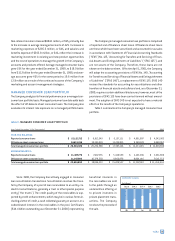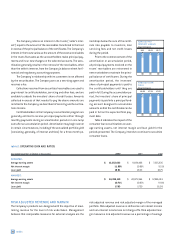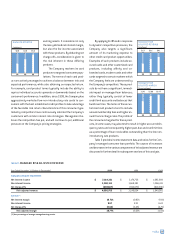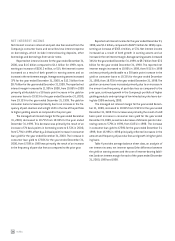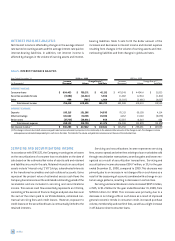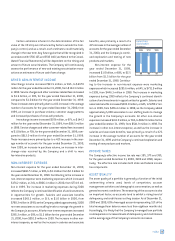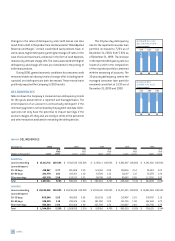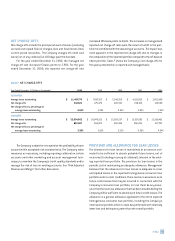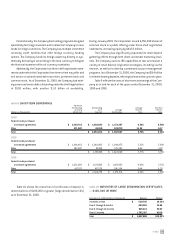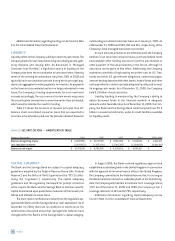Capital One 2000 Annual Report Download - page 28
Download and view the complete annual report
Please find page 28 of the 2000 Capital One annual report below. You can navigate through the pages in the report by either clicking on the pages listed below, or by using the keyword search tool below to find specific information within the annual report.
The Company retains an interest in the trusts ("seller's inter-
est") equal to the amount of the receivables transferred to the trust
in excess of the principal balance of the certificates. The Company's
interest in the trusts varies as the amount of the excess receivables
in the trusts fluctuates as the accountholders make principal pay-
ments and incur new charges on the selected accounts. The secu-
ritization generally results in the removal of the receivables, other
than the seller's interest, from the Company's balance sheet for fi-
nancial and regulatory accounting purposes.
The Company's relationship with its customers is not affected
by the securitization. The Company acts as a servicing agent and
receives a fee.
Collections received from securitized receivables are used to
pay interest to certificateholders, servicing and other fees, and are
available to absorb the investors' share of credit losses. Amounts
collected in excess of that needed to pay the above amounts are
remitted to the Company, as described in Servicing and Securitiza-
tions Income.
Certificateholders in the Company's securitization program are
generally entitled to receive principal payments either through
monthly payments during an amortization period or in one lump
sum after an accumulation period. Amortization may begin sooner
in certain circumstances, including if the annualized portfolio yield
(consisting, generally, of interest and fees) for a three-month pe-
riod drops below the sum of the certifi-
cate rate payable to investors, loan
servicing fees and net credit losses
during the period.
Prior to the commencement of the
amortization or accumulation period,
all principal payments received on the
trusts' receivables are reinvested in
new receivables to maintain the princi-
pal balance of certificates. During the
amortization period, the investors'
share of principal payments is paid to
the certificateholders until they are
paid in full. During the accumulation pe-
riod, the investors' share of principal
payments is paid into a principal fund-
ing account designed to accumulate
amounts so that the certificates can be
paid in full on the expected final pay-
ment date.
Table 2 indicates the impact of the
consumer loan securitizations on aver-
age earning assets, net interest margin and loan yield for the
periods presented. The Company intends to continue to securitize
consumer loans.
26 md&a
table 2: OPERATING DATA AND RATIOS
Year Ended December 31 (Dollars in Thousands) 2000 1999 1998
REPORTED:
Average earning assets $ 13,252,033 $ 9,694,406 $ 7,225,835
Net interest margin 11.99% 10.86% 9.51%
Loan yield 19.91 19.33 18.75
MANAGED:
Average earning assets $ 24,399,119 $ 20,073,964 $ 17,086,813
Net interest margin 10.71% 10.83% 9.91%
Loan yield 17.83 17.59 16.99
RISK ADJUSTED REVENUE AND MARGIN
The Company's products are designed with the objective of maxi-
mizing revenue for the level of risk undertaken. Management
believes that comparable measures for external analysis are the
risk adjusted revenue and risk adjusted margin of the managed
portfolio. Risk adjusted revenue is defined as net interest income
and non-interest income less net charge-offs. Risk adjusted mar-
gin measures risk adjusted revenue as a percentage of average











